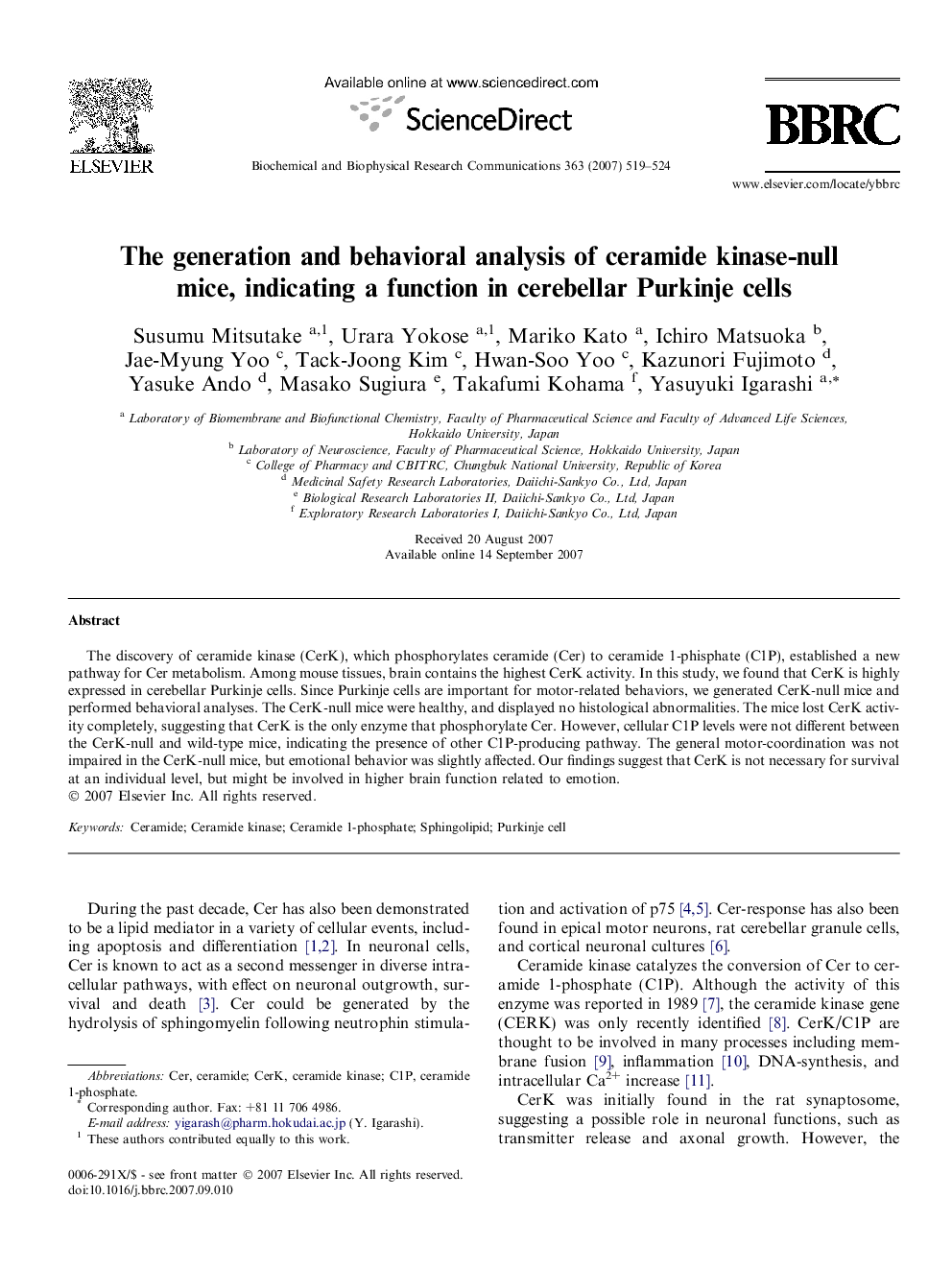| Article ID | Journal | Published Year | Pages | File Type |
|---|---|---|---|---|
| 1936945 | Biochemical and Biophysical Research Communications | 2007 | 6 Pages |
The discovery of ceramide kinase (CerK), which phosphorylates ceramide (Cer) to ceramide 1-phisphate (C1P), established a new pathway for Cer metabolism. Among mouse tissues, brain contains the highest CerK activity. In this study, we found that CerK is highly expressed in cerebellar Purkinje cells. Since Purkinje cells are important for motor-related behaviors, we generated CerK-null mice and performed behavioral analyses. The CerK-null mice were healthy, and displayed no histological abnormalities. The mice lost CerK activity completely, suggesting that CerK is the only enzyme that phosphorylate Cer. However, cellular C1P levels were not different between the CerK-null and wild-type mice, indicating the presence of other C1P-producing pathway. The general motor-coordination was not impaired in the CerK-null mice, but emotional behavior was slightly affected. Our findings suggest that CerK is not necessary for survival at an individual level, but might be involved in higher brain function related to emotion.
